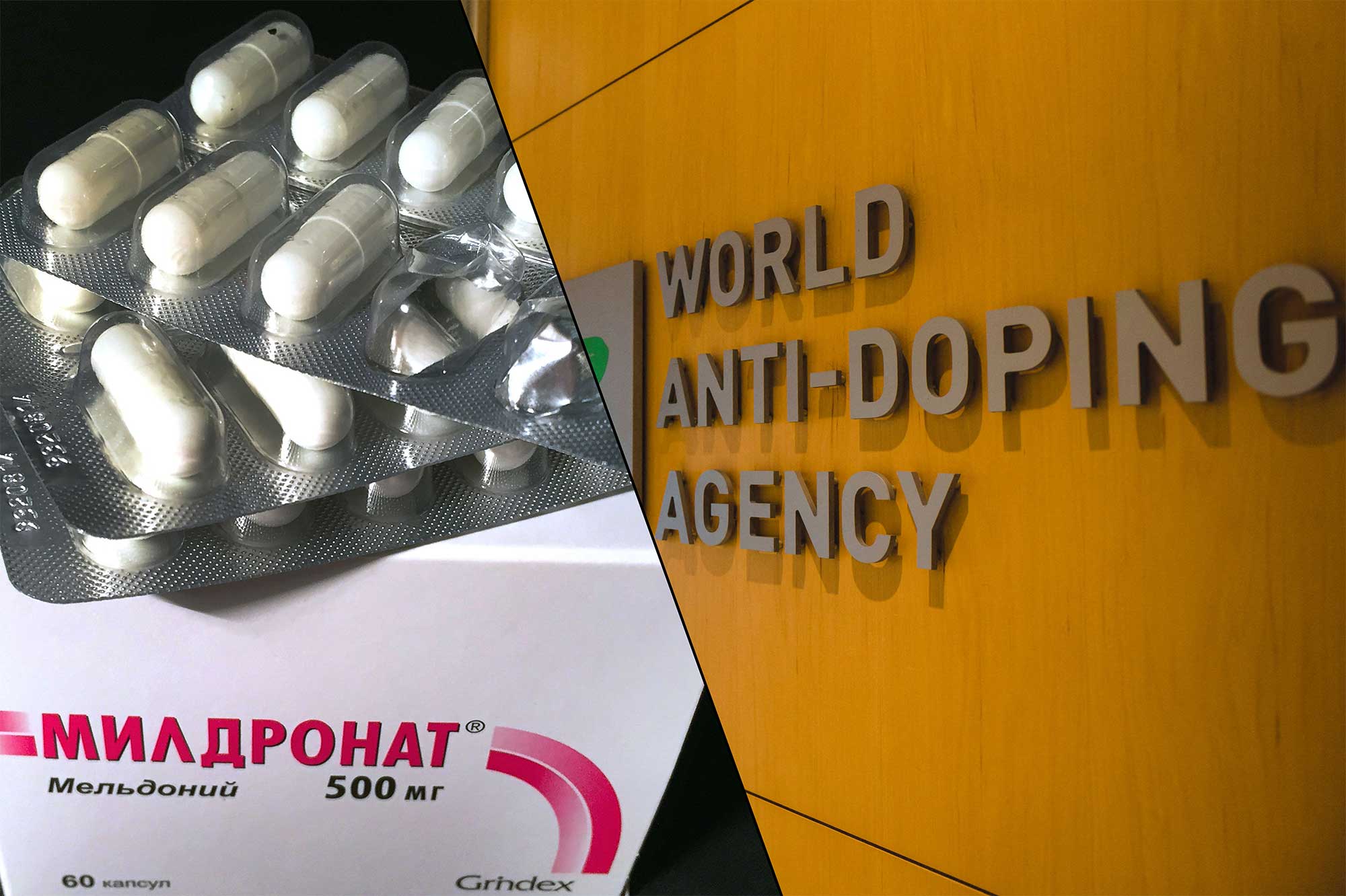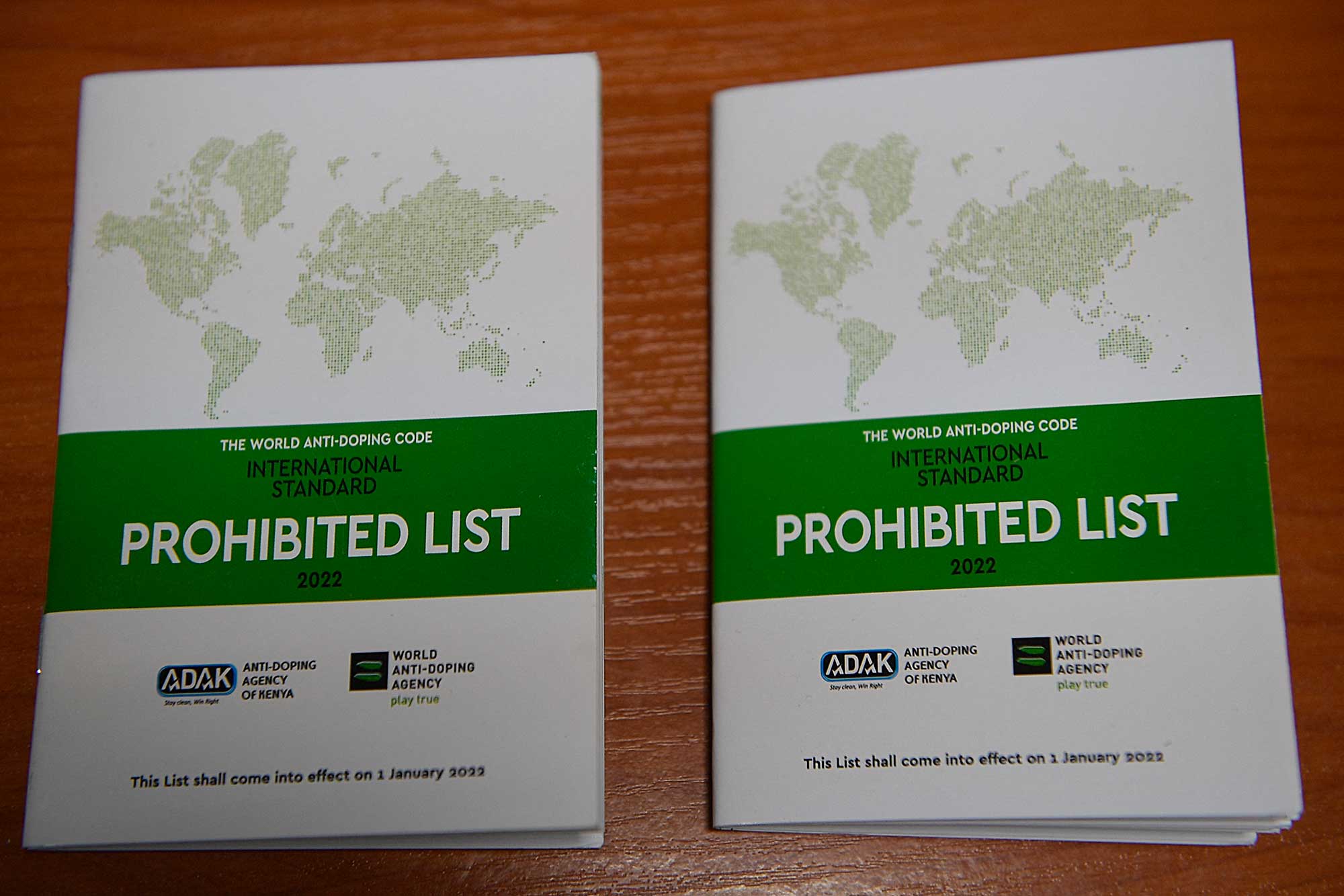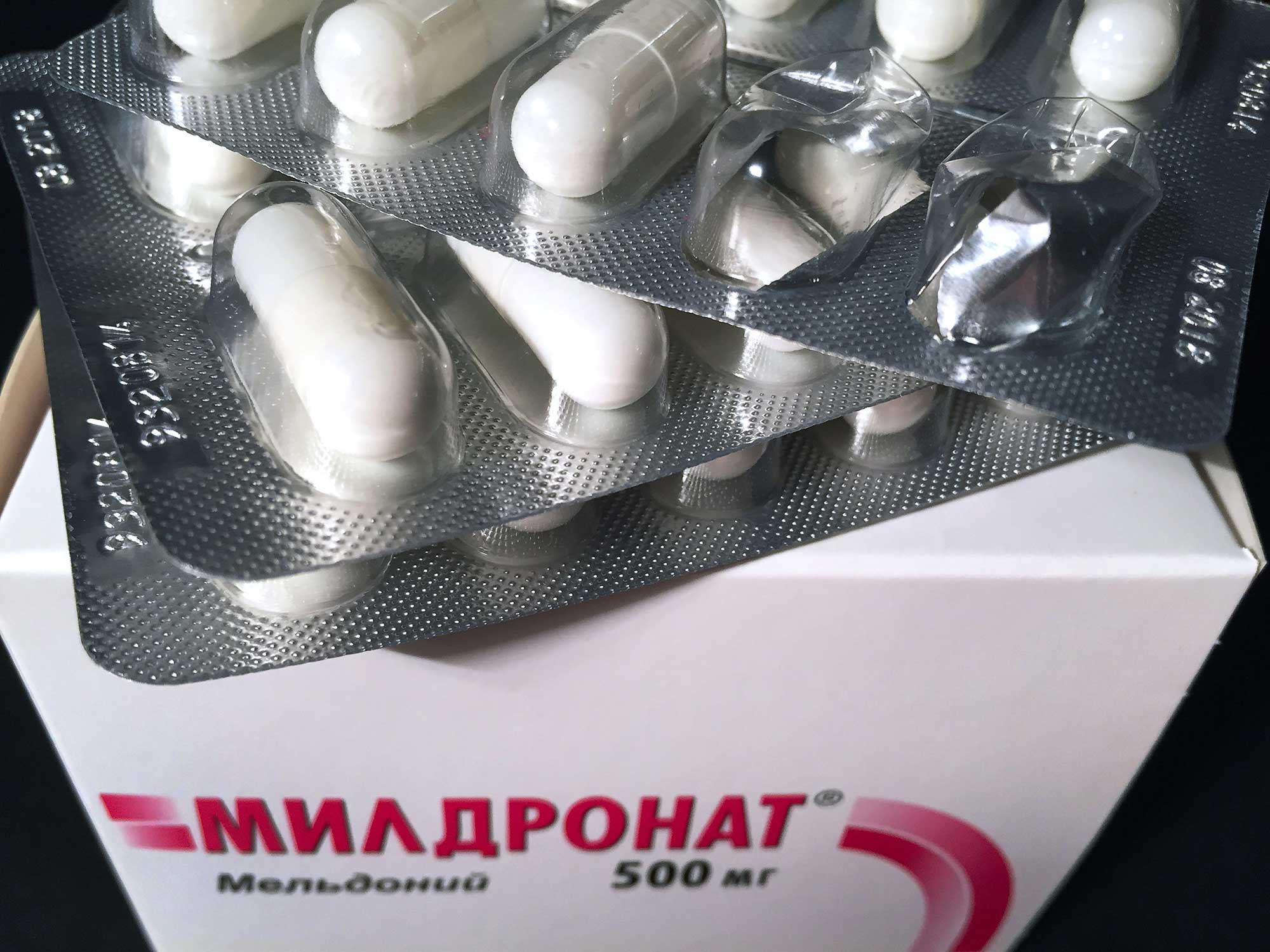
Why do we ban certain substances in sports and not others? It may seem like a technical question, but the principle behind it underpins the core values of anti-doping.
A substance is placed on WADA’s prohibited list if it meets two of these three criteria: it enhances, or has the potential to enhance performance; it may pose a risk to the athlete’s health; or it violates the ‘spirit of sport’. The third criterion is nebulous, but the first two are factual.
Health alone was once the solid footing of anti-doping, and prominent Grand Tour champions will still cite health concerns as proof of their aversion to doping. However, sports and medicine have changed dramatically since the era of doping tragedies such as Tom Simpson. Most recent doping controversies have unveiled intricate systems powered by close medical supervision, and infamous abusers of banned substances live out their retirements in seemingly enviable health.
Doping is also, unfortunately, a widespread phenomenon in professional sports, with historical data (2011) suggesting up to 60% of athletes dope, while a more recent study (2022) in Frontiers cut that to a still high 21%. The medical fallout of that endemic use is not overly obvious.
Nothing frames the confidence with which some athletes are open to embracing doping more than the mooted Enhanced Games, where drugs on the WADA (World Anti-Doping Agency) Prohibited List will be allowed.
Posing a threat to athletes’ health is certainly the most concerning aspect of this would-be event, especially when you reflect on, in our case, cycling’s dark past.
So is the willingness to dope a reflection of pure brazen ambition, or a reflection of a landscape where the health risks aren't as frightening, or perhaps the data no longer suggests the health risks are there?
Revisiting doping's dark legacy
In 2007, research in the journal Sports Medicine revealed that “EPO use is a suspect in nearly 20 deaths in four years in European cyclists”. Between 2003 and 2004 alone these allegedly included eight deaths including 21-year-old Belgian amateur Johan Sermon, who died of a heart attack and 16-year-old Italian Marco Ceriani, who experienced a heart attack during a race, fell into a coma and never recovered consciousness.
As William Fotheringham wrote in the Guardian at the time, "Although there is no evidence directly linking the recent spate of fatalities to banned drug use, a similar cluster of deaths – mainly in the Low Countries – in the early 1990s is now held to have marked the arrival in cycling of the banned blood-booster erythropoietin (EPO)."
Despite Fotheringham suggesting that "there is no evidence directly linking the recent spate of fatalities to banned drug use", the EPO link seemed tragically persuasive, especially as deaths like these are rare in cycling in 2024 – we can’t list one such cardiac attack in the sport in the year – with much of the credit down to the Athlete Biological Passport, which has been used in cycling since 2008.
So what is the actual evidence that substances like EPO are dangerous and should be on the Prohibited List? When it comes to EPO, hold that thought. We’ll come back to that. For now, let’s take a bird’s eye view of doping and examine the evidence. And, in all honesty, it doesn’t look that clear from up here…

Certainly not when you read 2023 research by Jo Morrison, professor of kinesiology at Longwood University in America. The title of her study, featured in the journal Performance Enhancement & Health, says it all: "Lack of evidence that doping is harmful to the health of elite athletes."
A snapshot of Morrison’s research…
"There is evidence that the pattern of banned substance use in elite athletes is high, yet morbidity and mortality of elite athletes is not greater than the general population, and former elite athletes live longer and healthier lives than age-matched controls."
"This sweeping claim [that the use of performance-enhancing drugs (PEDs) is harmful to the health of the athlete] assumes that PEDs are specifically harmful to athletes, despite many of these substances being approved for human use in patient populations that are of less robust health than athletes."
"While anti-doping authorities often rely on the mantra that PEDs are dangerous and can harm the athlete’s health, this is a claim that’s based on anecdotal reports of misuse, absence of qualified medical guidance, black market PEDs, and preferential selection of substances that have not been approved for human use but are easier for the user to obtain and may have a better chance of evading anti-doping testing. The assertion that PEDs harm the health of the elite performers who are subject to testing and sanction is not evidence-based."
Morrison also cites a 2019 review that examined the "evidence of performance enhancement of the 23 classes of substances on the prohibited list and concluded there was no evidence of performance enhancement for the majority of classes of substances on the list. Either there were no studies available or studies showed no positive effect. For the five classes of substances that did show performance enhancement in trained athletes, the evidence is based on 11 studies with 266 participants."
Sign up to the Musette - our subscriber-only newsletter
The study, which featured in the journal Sports Medicine, was co-authored by Jules Heuberger, of the Centre for Human Drug Research in Leiden, Netherlands, where he undertakes clinical trials for pharmaceutical and biotech companies for developing new drugs for diseases. We contacted Heuberger to reflect on his findings that not only looked at the performance-enhancing aspect but the potential health risks, too.
"My CEO and I thought that the drugs on the Prohibited List are obviously pharmaceutical drugs, intended to help some kind of disease, so it’d only make sense to apply the same reasoning, the same scientific rigour, to drugs like these to test whether they actually enhance its performance or whether they are harmful," he says. "To apply the same standards as we do for drugs that we take to the market, as if we were testing a treatment for a disease called cycling slowly!"
When it came to the health-risk aspect, the paper suggested that while any substance can jeopardise an athlete’s health and that there could be side effects to all substances, the "requirement that a substance specifically may affect the health of an athlete is not supported by evidence."
And without scientific evidence, the application of this criterion is equally arbitrary to that for enhancement.
Why Meldonium?
"One of the problems is that the process WADA follows is not transparent," he says. "After a series of discussions and meetings, it’s decided to either put a substance on the list or to monitor it. But the whole process and what evidence is required is muddy."
And political. "In that paper, we wrote about meldonium," he continues. "It was put on the monitoring list because there was a large proportion of Eastern European athletes allegedly using it. It sounds like there was much lobbying and it finally hit the prohibited list."
Meldonium is used to treat ischemia: a lack of blood flow to parts of the body, particularly in cases of angina or heart failure. It’s manufactured in Latvia and only distributed in Baltic countries and Russia. WADA found "evidence of its use by athletes with the intention of enhancing performance" by virtue of carrying more oxygen to muscle tissue, while a 2015 study showed that 17% of Russian athletes (724 of 4,316) tested were found to have meldonium in their system. It was banned in 2016, and classed as an S4 substance under the WADA code, which addresses hormone and metabolic modulators. In that same year, tennis player Maria Sharapova was banned for two years after testing positive for meldonium at the Australian Open.

"But if you look at the scientific evidence behind what meldonium does for treating disease, that’s almost non-existent," says Heuberger. "That’s why it’s not authorised in Western Europe or the United States [by the Food and Drug Administration]. So, if there’s little evidence in a medical arena, there’s certainly less evidence of improving performance of it being detrimental to health.
"Our point is that it’s not clear how a substance ends up on the Prohibited List. Of course, if you take too much of a substance, it could be unhealthy and dangerous. If that’s the case, you’d have to put sandwiches on the list as too many of those can be unhealthy and harm your health!"
The drugs don't work
We couldn’t discern if Heuberger was being flippant with that last point. But if the perception is that there’s an arbitrary nature to substances on the Prohibited List, the scientific rigour and openness Heuberger questioned is arguably constrained by the WADA Code and regulation 19.5 that states, "Research efforts should avoid the administration of prohibited substances or prohibited methods to athletes", while 19.6 reads, "Adequate precautions should be taken so that the results of anti-doping research are not misused and applied for doping purposes."
So, don’t test on athletes (makes sense with the elites as they could then be banned) and, if you do, don’t publicise the fact. Of course, research still happens, including ground-breaking and headline-making research by Heuberger and Professor Adam Cohen in 2017 when a study of theirs featured in The Lancet Haematology.
In that study, forty-eight participants were injected with EPO or a placebo for eight weeks, during which time they completed seven endurance tests in the laboratory. They then faced the final challenge, a 130km rider that finished with a race up Mont Ventoux in the summer of 2016. The winner, a lawyer, took an hour and 12 minutes to reach the summit. On average, riders on EPO were 38 seconds slower than the control group.
The study's findings that EPO didn’t super-charge cyclists swept the internet like worldwide wildfire. "It’s indisputable that the new red blood cells spawned by EPO increase the body’s maximum oxygen uptake (VO2 Max)," Cohen said at the time. "But such an increase may not boost cycling performance." In long-distance races like the Tour, he argued, riders rarely performed at maximum uptake. Yet in a review of 13 previous EPO studies, Cohen found that all focused on VO2 Max instead of performance. Critics argued this was too simplistic, that EPO’s a proven performance-enhancer and not just because it raises VO2 Max.
But were there health consequences in the study? "There were two markers in the blood that were elevated, both tied in with coagulation," Heuberger says. "But we didn’t observe clinical side-effects, so we couldn’t conclude that there’s an absolute health risk.
"However, we do know in patients with low haematocrit values – for example, kidney or cancer patients – that are being treated with EPO to boost their red blood cells, if you try to push them to normal haematocrit levels, the incidence of stroke and serious cardiovascular issues increases.
"So, one part of the answer is it depends on the dose, but something like EPO is not immediately dangerous, otherwise we wouldn’t have been able to do the trial. And we wouldn’t have done it if we didn’t think it was ethical."
Clearly, the dose is important. The higher the dose, the higher the potential benefit, and the higher the health risk. But, certainly with EPO, there’s evidence that even slight skews in blood levels can cause health problems.
A 2012 meta-analysis into the adverse effects of erythropoiesis-stimulating agents, including EPO, found an increased risk of stroke, venous thromboembolism and mortality in patients treated with these agents, particularly when used to achieve higher-than-normal haemoglobin levels.
There’s also evidence that EPO stimulates the growth of cancer tumours; can lead to the body’s immune system attacking red blood cell precursors, resulting in anaemia; and increases the chances of hypertension.
For Heuberger, there are substances "I’d think twice about [taking]. That includes growth hormone and drugs that influence the immune system. Then you have drugs like anabolic steroids that have clear side-effects detrimental to health."
With over 400 substances on the Prohibited List, that’s not a lot, which is Heuberger’s point. For too many of the substances, he says, there simply isn’t evidence of performance enhancement or health risk.
It’s something we posed to WADA, a spokesperson responding: "The inclusion of ‘it may pose a risk to the athlete’s health’ as one of the three criteria speaks to a central element of WADA’s mission to lead a collaborative worldwide campaign for doping-free sport. A key feature of our work is to monitor scientific and medical developments in sport with the aim to safeguard not just the level playing field but also the health of athletes.
"Not all substances and methods that are included on the Prohibited List necessarily pose a risk to the health of athletes, which is why a substance/method will be included in the List if it satisfies any two of the three criteria."
As a reminder, the other two criteria are the potential to enhance performance and violating the spirit of sport. Seen through an academic lens, this makes things even blurrier as Heuberger’s paper revealed that there’s limited evidence behind many of the Prohibited List’s substances’ performance benefits. If there’s little evidence of a health risk, too, that’s not violating the spirit of the sport. Then again, you might ask, why would an athlete take a substance that didn’t benefit performance?

A decent reason not to dope
But would you risk it? Let’s take the substances Heuberger would think twice about: growth hormones and drugs that influence the immune system. According to the Mayo Clinic, side effects linked to human growth hormone may include pain in joints; cause diabetes; increased heart size in a condition known as cardiomegaly; raised blood pressure; and lead to eyesight problems.
A 2008 review of the growth hormone athletic literature showed that lean body mass increased in growth hormone recipients compared with participants who didn’t receive growth hormone. On the downside, "hormone-treated participants more frequently experienced soft tissue oedema and fatigue than did those not treated with growth hormone."
Further research referenced by Harvard Health Publishing, albeit in older individuals, showed that growth hormone recipients experienced a high rate of side effects, including fluid retention, joint pain, breast enlargement and carpal tunnel syndrome. The studies were too short to detect any change in the risk of cancer, but other research suggests an increased risk of cancer in general and prostate cancer in particular.
Heuberger would also veer away from drugs that influence the immune system. According to Heuberger’s 2019 paper, one example is glucocorticoids, which "act on metabolism and the immune system, and, through that mechanism, potentially affect performance."
There’s clear evidence that prolonged use can damage health with a 2013 study in the journal Neurohospitalist revealing an increase in osteoporosis, osteonecrosis (death of bone tissue due to the interruption of blood supply) and even heart disease.
Beyond the dangers of health, there’s also the riders’ ethical responsibility to not cheat. In ethics, the concept of fairness involves treating everyone equally and impartially.
‘Fair play’ is usually understood to mean using only tactics that are in accord with the spirit of the sport. That’s on a human level. But on a formal level, that’s where UCI and WADA rules come in.
Again on a human level, it does beg the question: why do athletes dope? Michael Joyner wrote a piece in 2013 suggesting that one of the reasons is down to game theory. Athletes are in a game with one another, the piece argued, each vying for the best result and highest salary. If the athlete feels testing and enforcement are lax, the risk of being beaten by a doper is perceived to be larger than the risk of getting caught. In short, doping becomes the optimal strategy for victory.
An Enhanced free-for-all?
Now, let us return to the Enhanced Games, namely the safety aspect that they pay great credence to on their website. "Athletes competing in the Enhanced Games will receive free medical screening prior to competition, which will ensure that they are healthy and able to compete,” it reads. “The screening will involve an echocardiogram, blood tests and genomic sequencing, in order to build up a full picture of the athlete’s health, and allow athletes to make an informed decision about whether they are safe to compete."
Then, "The Enhanced Medical Pre-Screening Protocol, which is still in development, will allow athletes to track their biomarkers prior to competition, creating a blueprint of athletic excellence that could be used to inform performance therapies, diet, sleep, and training."
Safety, if you believe the marketing, is paramount at the Enhanced Games. But which doctor would prescribe therapeutic drugs for performance reasons without risking being struck off?
"That’s what we’re arguing," says Brett Fraser, chief athletics officer of the Enhanced Games and two-time Olympic swimmer. "We’re looking to create an environment where we’re using the best doctors and scientists in the world to understand and optimise sporting performance in a safe manner. This is all going to be done with the focus on the safety of athletes. That’s the most important thing."

One of Fraser’s hopes is that they’ll learn what doping products today’s current athletes might be using and feedback to WADA so that they can improve their testing protocols. Whether that’s philanthropy or simply a safety smokescreen, well, we’ll leave that hanging. What’s clearer is that Fraser feels the Prohibited List has become bloated based on little empirical data.
"You’ll find some pretty interesting substances on there," says Fraser. "And there’s an inconsistency. Why would they be allowed in training but not in competition, for example? What is the rationale behind some of these substances being on the prohibited list? They’re not studied enough and could be perceived as being arbitrary in nature."
This has clear parallels with Heuberger, so what does Heuberger think about the Enhanced Games? "I don’t think it’s something I support as it seems too extreme," he says. "However, it would be interesting to see what’s possible with pharmacological enhancement, but this isn’t the best way to investigate it because it’ll be difficult to do in a balanced and well-controlled way that protects the health of the athlete."
Will the Enhanced Games happen? If PayPal co-founder Peter Thiel has his way it will. Thiel was revealed as an investor in a multi-million-dollar seed round in January for the Games.
Where does that leave us? Substances like EPO and steroids have sufficient empirical and anecdotal evidence behind them to suggest that they’re potentially harmful to health, certainly at reasonably high levels. Whether that’s enough of a deterrent to an athlete depends on their motivation, desperation and moral compass.
But there’s a clear feeling that many of the substances require further research to quantify the potential risks and how much of a performance enhancement they’ll deliver. If you can prove that they don’t enhance performance, of course, then that will arguably be a greater deterrent to an athlete taking it than the health-risk aspect.
Heuberger suggests restructuring the setup so that you focus on the drugs that you think will have a big performance gain, undertake proper tests or trials for that, and then put those on the list and develop very sensitive tests to detect them. He also feels that WADA should drop the third criteria for placing substances on the List, the ‘spirit of sport’, because of its problematic fuzziness.
As stakes become higher, technology becomes better, and medical knowledge becomes deeper, the challenge of anti-doping will become greater. In a future where athletes aren't concerned with health risks, we can only hope that ethics is front and centre to the principles of our sporting stars.
If you subscribe to Cyclingnews, you should sign up for our new subscriber-only newsletter. From exclusive interviews and tech galleries to race analysis and in-depth features, the Musette means you'll never miss out on member-exclusive content. Sign up now







